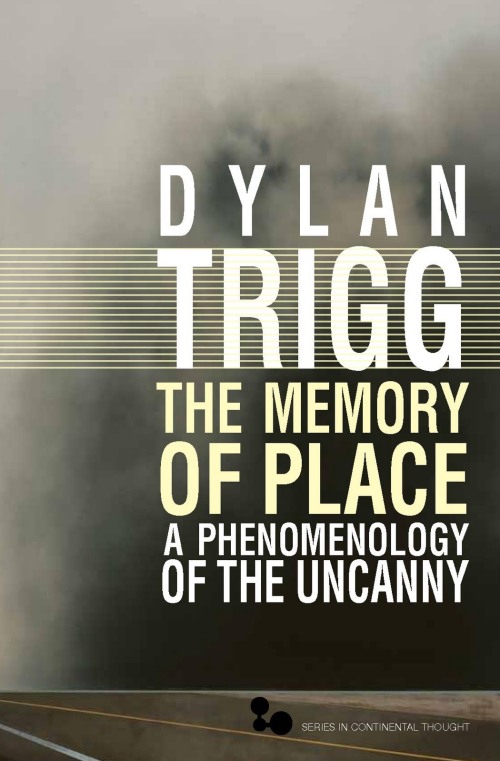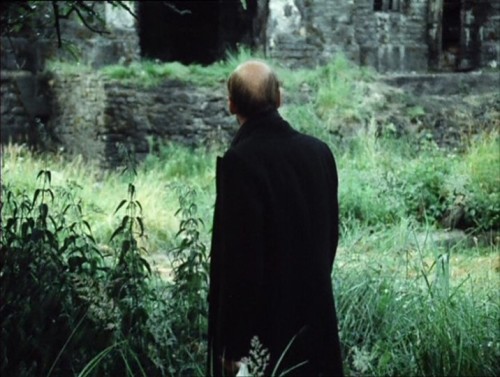Videogame researcher and developer Ian Bogost posted this video he made on the photography of Garry Winogrand, looked at through the lens of object-oriented ontology–a philosophical approach he shares with Graham Harman, Levi Bryant, and Timothy Morton. While my own metaphysical orientation is closer to the process-relational metaphysics put forward by people like Steven Shaviro and Adrian Ivakhiv (and following people like Whitehead and Deleuze), I agree with Adrian Ivakhiv that a significant middle ground can be found between the two positions. This is something that has been debated time and again in the speculative realism blogosphere, and I don’t want to get into that debate here; above all, I don’t want to suggest that there is no difference between these “schools” of thought, only that for some purposes these differences may be less important than the commonalities–above all, the common opposition to what Quentin Meillassoux has identified as “correlationism,” or the view that subjects and objects, humans and things, phenomenal appearances and substratal reality are always and inextricably tied to one another, that there can be no access to a realm outside human thought, and that there is no interaction that would breach this correlation. One can certainly question the claim that all of post-Kantian Western philosophy up until the advent of speculative realism (itself a contentious term that collects positions so various as to be outright opposed to one another) was beholden to the spell of correlationism, but whatever one decides about that, Meillassoux’s identification of this tendency is surely not without heuristic value. And thus speculative realisms, object-oriented ontologies, and process-relational philosophies can be seen to make common cause with posthumanistic positions that aim to decenter human perspectives and anthropocentrisms of all sorts. In my own work, I have tried to triangulate such philosophical efforts with a theory of media as (in Mark Hansen’s words) “the environment for life” or, as I prefer, media as the environment for agency (both living and nonliving). Anyway, this is all just a long way of saying that I recommend watching Ian Bogost’s nicely made video, which offers a thought-provoking contribution to this effort to think media beyond the frame of human intentionality, instrumentality, and sentimentality.
Tag: philosophy
Dylan Trigg’s uncanny (film) phenomenology
 Just a few days ago, I linked to Adrian Ivakhiv’s article “The Anthrobiogeomorphic Machine: Stalking the Zone of Cinema” in the most recent issue of Film-Philosophy. Another highlight in that issue comes from Dylan Trigg, a researcher at the Centre de Recherche en Epistémologie Appliquée in Paris, whose blog Side Effects I just recently discovered. Trigg’s paper, “The Return of the New Flesh: Body Memory in David Cronenberg and Merleau-Ponty,” can be found here; and here is the abstract:
Just a few days ago, I linked to Adrian Ivakhiv’s article “The Anthrobiogeomorphic Machine: Stalking the Zone of Cinema” in the most recent issue of Film-Philosophy. Another highlight in that issue comes from Dylan Trigg, a researcher at the Centre de Recherche en Epistémologie Appliquée in Paris, whose blog Side Effects I just recently discovered. Trigg’s paper, “The Return of the New Flesh: Body Memory in David Cronenberg and Merleau-Ponty,” can be found here; and here is the abstract:
From the “psychoplasmic” offspring in The Brood (1979) to the tattooed encodings in Eastern Promises (2007), David Cronenberg presents a compelling vision of embodiment, which challenges traditional accounts of personal identity and obliges us to ask how human beings persist through different times, places, and bodily states while retaining their sameness. Traditionally, the response to this question has emphasised the importance of cognitive memory in securing the continuity of consciousness. But what has been underplayed in this debate is the question of how the body can both reinforce and disrupt the grounds for our personal identity. Accordingly, by turning the notoriously “body conscious” work of Cronenberg, especially his seminal The Fly (1986), I intend to pursue the relation between identity and embodiment in the following way.
First, by augmenting John Locke’s account of personal identity with a specific appeal to the body, I will explore how Cronenberg’s treatment of embodiment as a site of independent experience challenges the idea we have that cognitive memory is the guarantor of personal identity. Cronenberg’s treatment of the “New Flesh” posits an account of the body that undermines the Cartesian and Lockean account of personal identity as being centred on the mind. In its place, I will argue that Cronenberg shows us how the body establishes a personality independently of the mind.
Second, through focusing explicitly on body memory, I will explore how we, as embodied subjects, relate to our bodies in a Cronenbergian world. Approaching this relation between memory and embodiment via the phenomenology of Merleau-Ponty, I will argue that memory is at the heart of Cronenberg’s vision of body horror. I will conclude by suggesting that far from generating unity, Cronenberg’s vision of embodiment and identity is diseased (often literally) by a memory that cannot be assimilated by cognition. The result of this failure to assimilate body memory, is that memory itself occupies the role of the monster within.
As evidenced on his blog, Trigg is doing some really fascinating phenomenological work (for example, a great post here on “The Language of Hauntings”), and his book, The Memory of Place: A Phenomenology of the Uncanny, is due out in 2012 (available now for pre-order). Here’s the publisher’s blurb for the book:
From the frozen landscapes of the Antarctic to the haunted houses of childhood, the memory of places we experience is fundamental to a sense of self. Drawing on influences as diverse as Merleau-Ponty, Freud, and J. G. Ballard, The Memory of Place charts the memorial landscape that is written into the body and its experience of the world.
Dylan Trigg’s The Memory of Place offers a lively and original intervention into contemporary debates within “place studies,” an interdisciplinary field at the intersection of philosophy, geography, architecture, urban design, and environmental studies. Through a series of provocative investigations, Trigg analyzes monuments in the representation of public memory; “transitional” contexts, such as airports and highway rest stops; and the “ruins” of both memory and place in sites such as Auschwitz. While developing these original analyses, Trigg engages in thoughtful and innovative ways with the philosophical and literary tradition, from Gaston Bachelard to Pierre Nora, H. P. Lovecraft to Martin Heidegger. Breathing a strange new life into phenomenology, The Memory of Place argues that the eerie disquiet of the uncanny is at the core of the remembering body, and thus of ourselves. The result is a compelling and novel rethinking of memory and place that should spark new conversations across the field of place studies.
Edward S. Casey, Distinguished Professor of Philosophy at Stony Brook University and widely recognized as the leading scholar on phenomenology of place, calls The Memory of Place “genuinely unique and a signal addition to phenomenological literature. It fills a significant gap, and it does so with eloquence and force.” He predicts that Trigg’s book will be “immediately recognized as a major original work in phenomenology.”
I highly recommend checking out Dylan Trigg’s blog and his article in Film-Philosophy, and I look forward to reading his wonderful-sounding book!
Adrian Ivakhiv’s ecocritical film-philosophy
 Adrian Ivakhiv, Associate Professor of Environmental Studies at the University of Vermont, maintains the excellent blog immanence, where he posts regularly on “the Form, Flesh, and Flow of the World : Ecoculture, Geophilosophy, Mediapolitics” (as he puts it in the blog’s byline).
Adrian Ivakhiv, Associate Professor of Environmental Studies at the University of Vermont, maintains the excellent blog immanence, where he posts regularly on “the Form, Flesh, and Flow of the World : Ecoculture, Geophilosophy, Mediapolitics” (as he puts it in the blog’s byline).
Recently, he linked to a new article of his in the open-access online journal Film-Philosophy (published by the great Open Humanities Press), in a special issue on “Phenomenology and Psychoanalysis.” Here is the abstract of Ivakhiv’s paper, which is certainly worth reading in full:
The Anthrobiogeomorphic Machine: Stalking the Zone of Cinema
This article proposes an ecophilosophy of the cinema. It builds on Martin Heidegger’s articulation of art as ‘world-disclosing,’ and on a Whiteheadian and Deleuzian understanding of the universe as a lively and eventful place in which subjects and objects are persistently coming into being, jointly constituted in the process of their becoming. Accordingly, it proposes that cinema be considered a machine that produces or discloses worlds. These worlds are, at once, anthropomorphic, geomorphic, and biomorphic, with each of these registers mapping onto the ‘three ecologies,’ in Felix Guattari’s terms, that make up the relational ontology of the world: the social, the material, and the mental or perceptual. Through an analysis of Andrei Tarkovsky’s Stalker (1979), I suggest that cinema ‘stalks’ the world, and that our appreciation of its potentials should similarly involve a kind of ‘stalking’ of its effects in the material, social, and perceptual dimensions of the world from which cinema emerges and to which it returns.
Keywords:
Film theory; film-worlds; ecocriticism; ecologies; Tarkovsky
Beyond this paper, Ivakhiv is working on a book called Ecologies of the Moving Image, which I very much anticipate reading. Indeed, in many respects, Ivakhiv seems a kindred spirit of sorts in his process-relational philosophical orientation and his endeavor to formulate a non-anthropocentric philosophy of film. With his notion that the cinema is one of the places “in which subjects and objects are persistently coming into being, jointly constituted in the process of their becoming,” Ivakhiv’s views seem largely apposite with my own film-theoretical project, which, as I summarized (in German) recently, seeks a “rapprochement between the conflicting human and nonhuman agencies inhabiting [Frankenstein] films” and the cinema in general. As I outline it in Postnaturalism: Frankenstein, Film, and the Anthropotechnical Interface, this “rapprochement […] consists […] of a recognition of the mutual articulation of experience by human and nonhuman technical agencies, whereby the affective and embodied experience of anthropotechnical transitionality is not arrested and subjugated to human dominance, but approached experimentally as a joint production of our postnatural future” (24). Ivakhiv’s proposal “that cinema be considered a machine that produces or discloses worlds” seems, in my opinion, to point in the same – experimental and postphenomenological – direction.